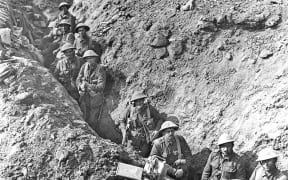A century after a Wairoa soldier was lost in the chaos of the Battle of the Somme, Andrew McRae meets the first family member to journey to the place that he fell.
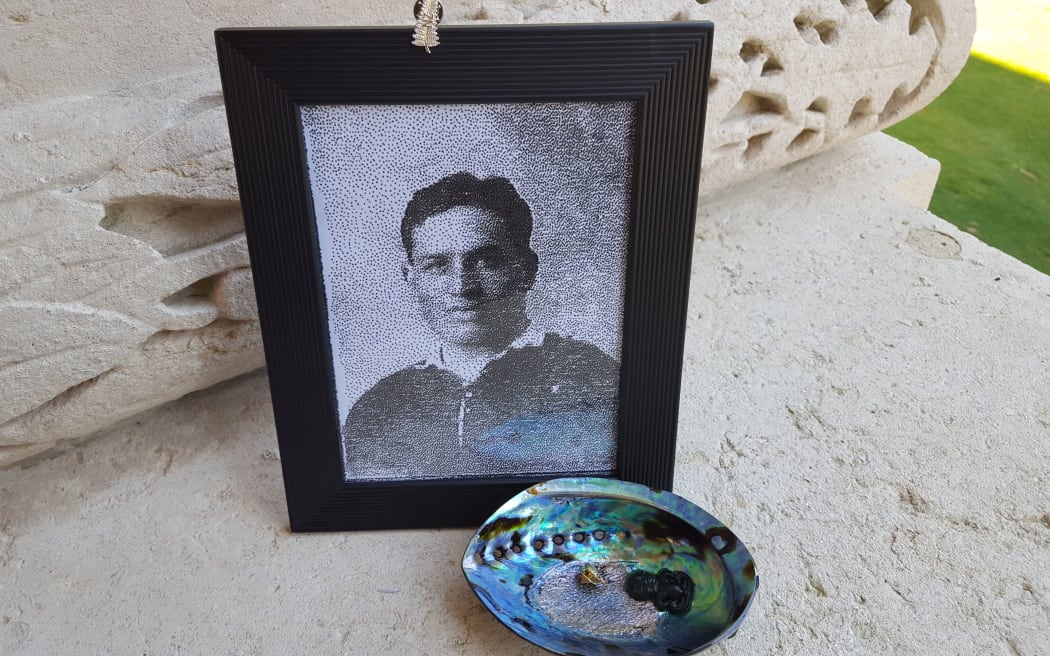
A photo of Alexander Ormond and a paua shell from the area he grew up in was laid by his family at the Somme memorial. Photo: RNZ / Andrew McRae
Alexander Ormond was from Wairoa, educated in Wanganui and at Lincoln College, but he did not get to enjoy the fruits of that education.
He lies somewhere in the Somme region of Northern France - one of thousands of soldiers who died for King and Country on the Western Front of the World War I and have no known grave.
His name lives on forevermore though, engraved in the memorial to the missing of the Somme at Thiepval.
There are 72,000 other names listed by regiment and alphabetically on the massive structure, the largest war memorial in the Commonwealth.
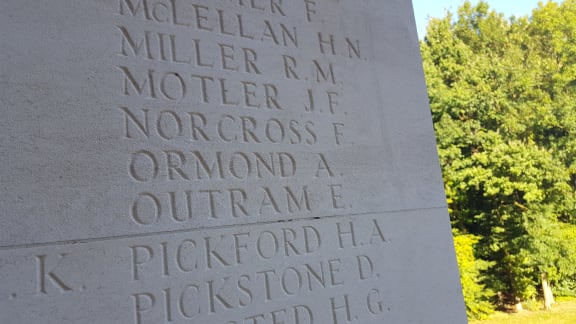
Alexander Ormond's name on the memorial at the Caterpillar Valley cemetery. Photo: RNZ / Andrew McRae
No one from Alexander Ormond's family has ever seen his name - until this week.
On Monday, his great-great niece, Aleisha MacGregor, who is 25 and serves in the Royal New Zealand Navy, paid him a call.
She left him a photo of himself and a pāua shell from where he came from.
She described it as a surreal experience, carrying the weight of her family on her shoulders.
"It is an emotional experience being here and very humbling."
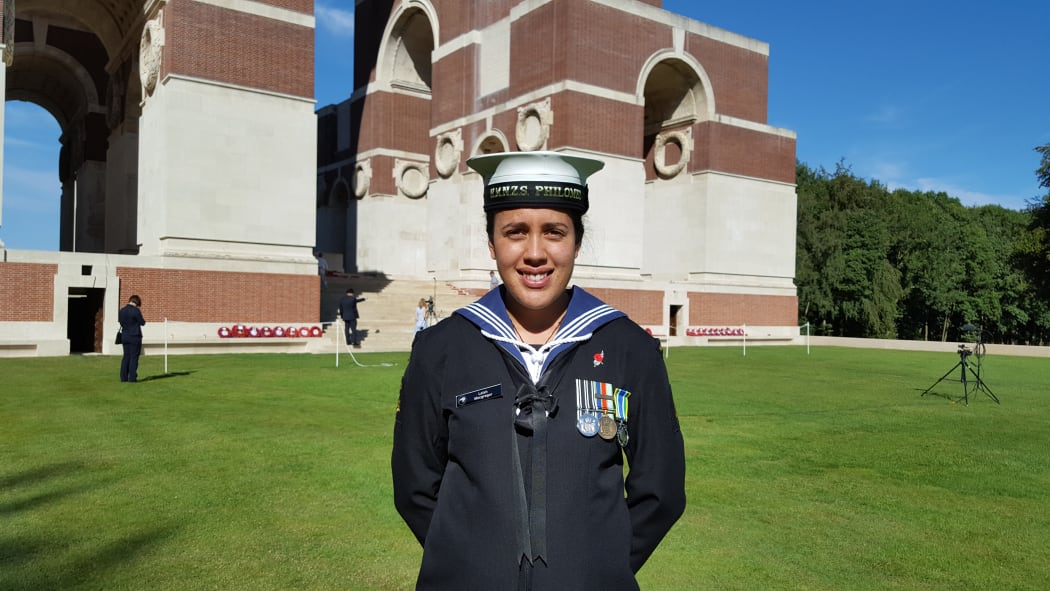
Alexander Ormond's great-great niece, Aleisha MacGregor. Photo: RNZ / Andrew McRae
Most of the names at Thiepval were those of British soldiers, as the majority of those who fell in action from other countries, such as New Zealand, are buried either by name or as no known grave at numerous memorials and cemeteries scattered around the Somme region. For New Zealand, it was places like Flers and Caterpillar Valley.
At Thiepval - for every day of the 141 days of the Battle of the Somme between July and November 1916 - a brief and simple service was held every day during the centennial year.
It was organised by the Royal British Legion, the equivalent of the New Zealand RSA.
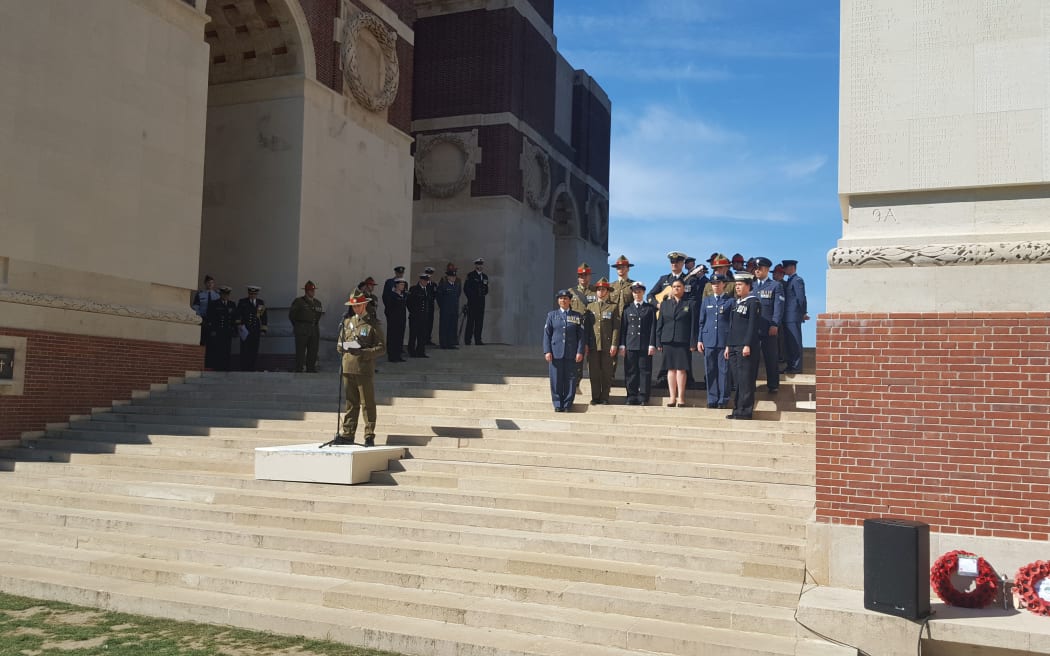
The NZDF took the lead at one of the daily memorial services at the Somme memorial this week. Photo: RNZ / Andrew McRae
On Monday the New Zealand Defence Force took the lead.
There was a prayer, a history reading, waiata and the names of 13 New Zealanders who died on the Somme on that day 100 years ago were read out.
They died as a result of long-range enemy fire as the New Zealand Division prepared to assault the German front lines starting on 15 September.
After three weeks of violent fighting, the New Zealand Division was relieved on 4 October, after losing 7500 men dead or wounded on the Somme.
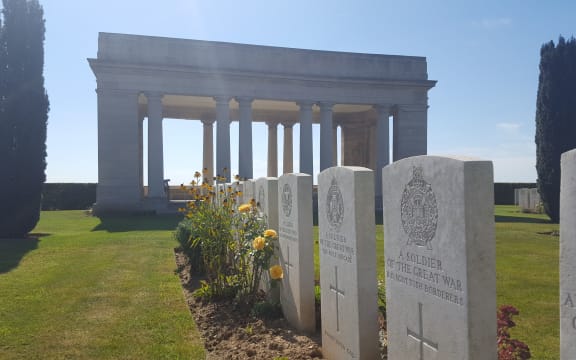
War graves at the Caterpillar Valley cemetery. Photo: RNZ / Andrew McRae
Rod Bedford from the British Legion was very complementary of the New Zealand Defence Force.
"They come with a quiet determination - not loud, not brash. They appear. Break hearts with their waiata and then disappear quietly."
Thiepval on Monday was an idyllic place. The memorial was set on high ground, surrounded by trees with magnificent vistas in all directions across farmland, with villages and towns identifiable mainly by their church towers away in the distance.
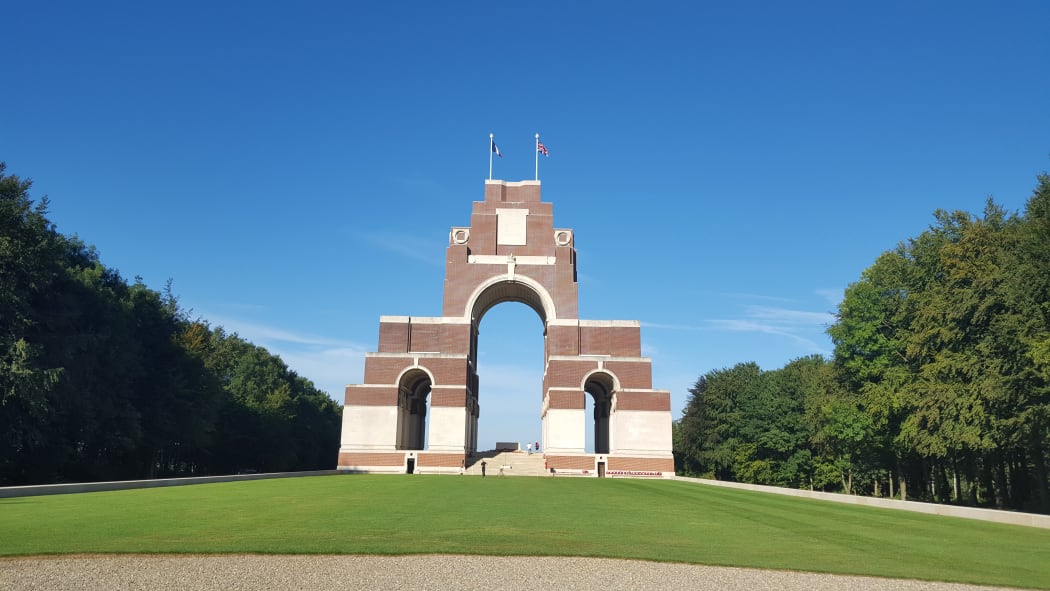
The Somme memorial Photo: RNZ / Andrew McRae
How different it was 100 years ago. No trees, no houses left standing and just a sea of mud and trenches, stench, decaying bodies. Death all around and all-consuming. Hell on earth, without a doubt.
At the time Captain Lindsay Inglis wrote:
"To the reek of explosives which filled the air farther back among the guns was now added the stench of corpses, which lay about everywhere on and in the earth, tilled feet down by shells. Dead of both sides, swelling and sodden, mud stained, grey and khaki uniforms were tossed in all attitudes among the earth of parapets and heaved out behind the crumbing ditches that passed as trenches.The whole effect was one of stagnant, putrid inactivity."
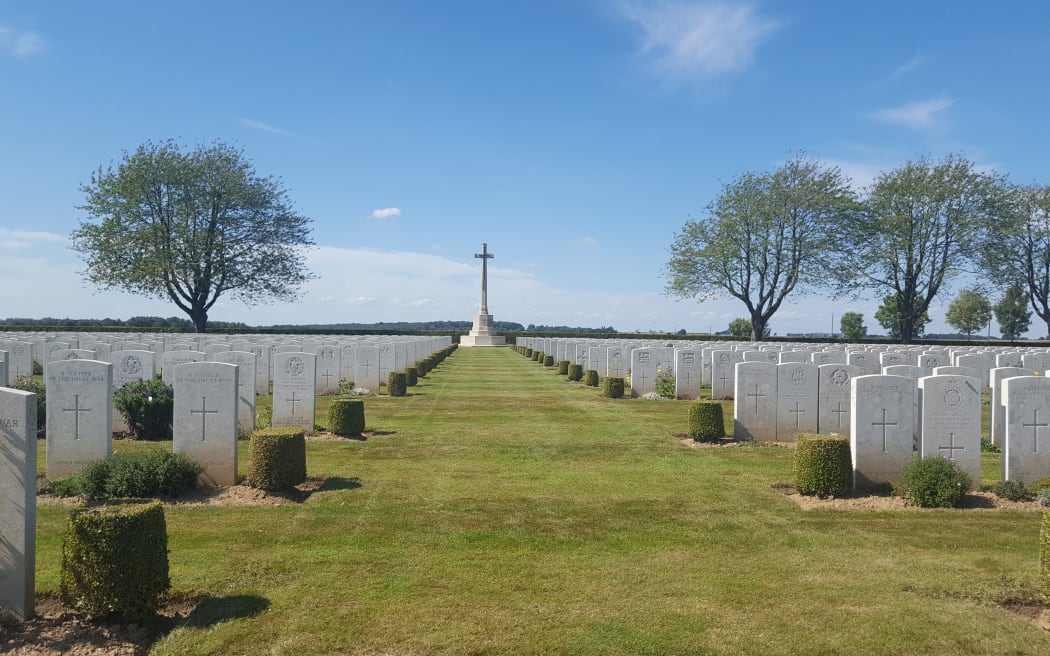
War graves at the Somme Memorial. Photo: RNZ / Andrew McRae
